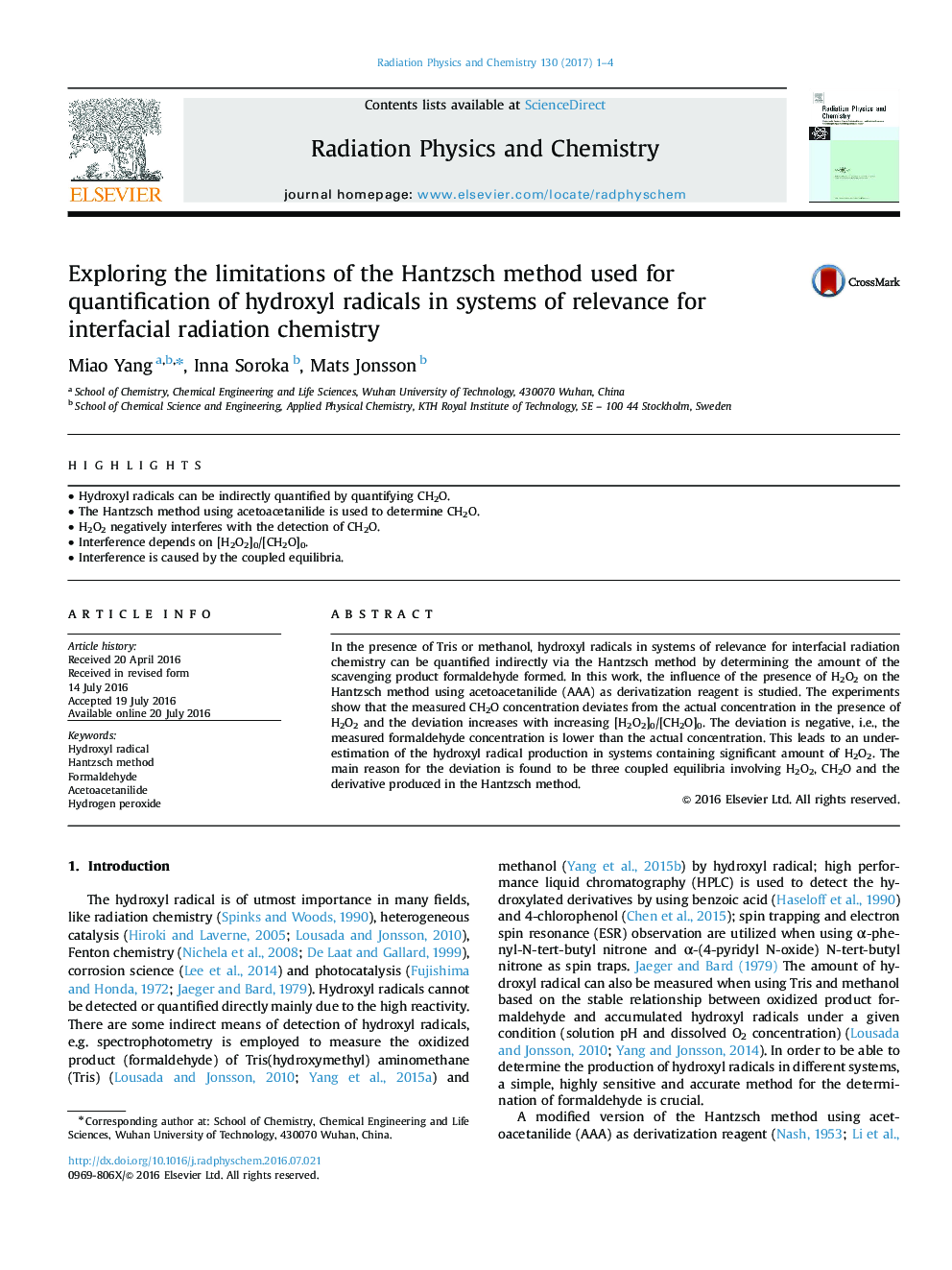| Article ID | Journal | Published Year | Pages | File Type |
|---|---|---|---|---|
| 1885729 | Radiation Physics and Chemistry | 2017 | 4 Pages |
•Hydroxyl radicals can be indirectly quantified by quantifying CH2O.•The Hantzsch method using acetoacetanilide is used to determine CH2O.•H2O2 negatively interferes with the detection of CH2O.•Interference depends on [H2O2]0/[CH2O]0.•Interference is caused by the coupled equilibria.
In the presence of Tris or methanol, hydroxyl radicals in systems of relevance for interfacial radiation chemistry can be quantified indirectly via the Hantzsch method by determining the amount of the scavenging product formaldehyde formed. In this work, the influence of the presence of H2O2 on the Hantzsch method using acetoacetanilide (AAA) as derivatization reagent is studied. The experiments show that the measured CH2O concentration deviates from the actual concentration in the presence of H2O2 and the deviation increases with increasing [H2O2]0/[CH2O]0. The deviation is negative, i.e., the measured formaldehyde concentration is lower than the actual concentration. This leads to an underestimation of the hydroxyl radical production in systems containing significant amount of H2O2. The main reason for the deviation is found to be three coupled equilibria involving H2O2, CH2O and the derivative produced in the Hantzsch method.
